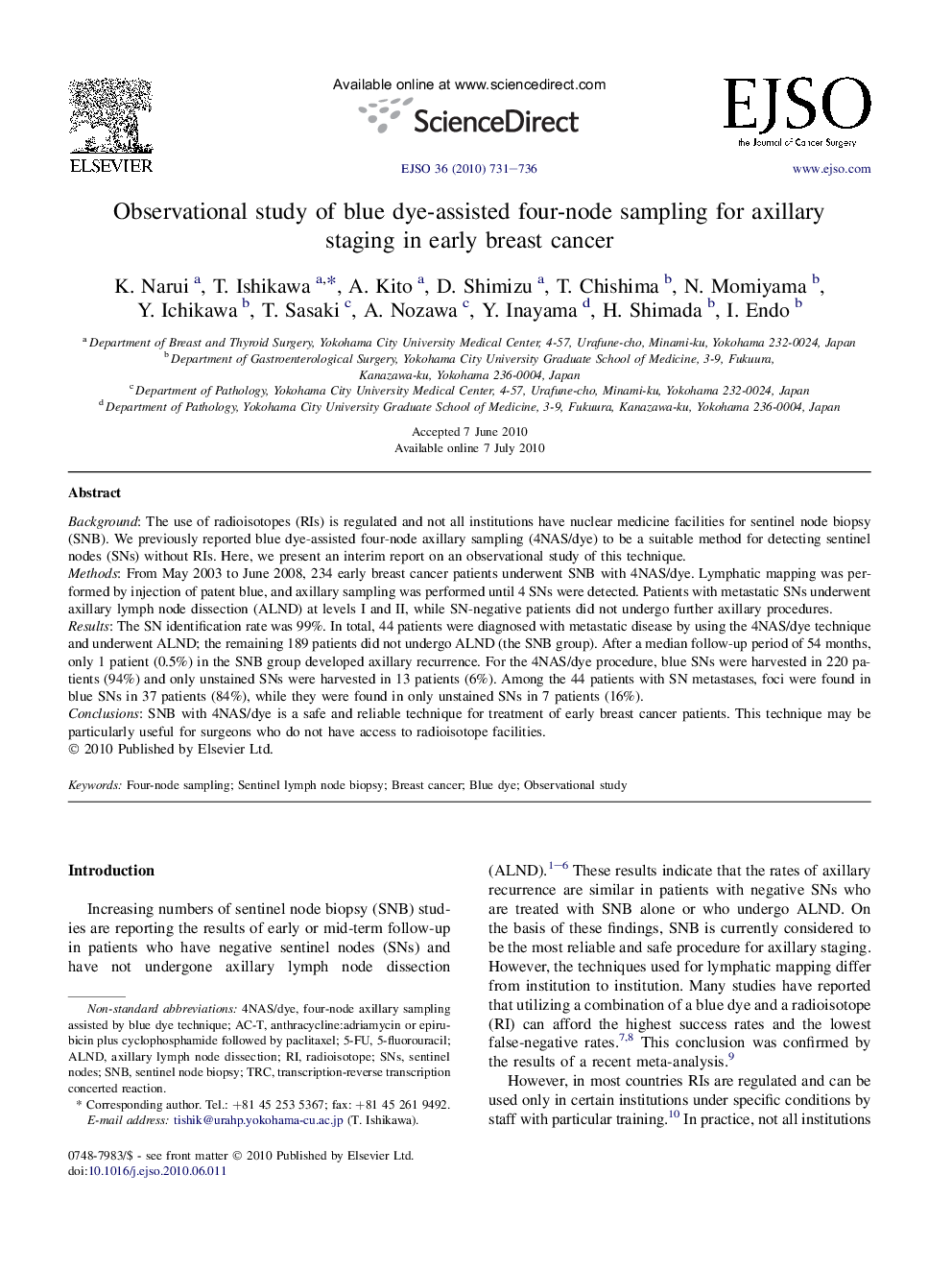| Article ID | Journal | Published Year | Pages | File Type |
|---|---|---|---|---|
| 3986468 | European Journal of Surgical Oncology (EJSO) | 2010 | 6 Pages |
BackgroundThe use of radioisotopes (RIs) is regulated and not all institutions have nuclear medicine facilities for sentinel node biopsy (SNB). We previously reported blue dye-assisted four-node axillary sampling (4NAS/dye) to be a suitable method for detecting sentinel nodes (SNs) without RIs. Here, we present an interim report on an observational study of this technique.MethodsFrom May 2003 to June 2008, 234 early breast cancer patients underwent SNB with 4NAS/dye. Lymphatic mapping was performed by injection of patent blue, and axillary sampling was performed until 4 SNs were detected. Patients with metastatic SNs underwent axillary lymph node dissection (ALND) at levels I and II, while SN-negative patients did not undergo further axillary procedures.ResultsThe SN identification rate was 99%. In total, 44 patients were diagnosed with metastatic disease by using the 4NAS/dye technique and underwent ALND; the remaining 189 patients did not undergo ALND (the SNB group). After a median follow-up period of 54 months, only 1 patient (0.5%) in the SNB group developed axillary recurrence. For the 4NAS/dye procedure, blue SNs were harvested in 220 patients (94%) and only unstained SNs were harvested in 13 patients (6%). Among the 44 patients with SN metastases, foci were found in blue SNs in 37 patients (84%), while they were found in only unstained SNs in 7 patients (16%).ConclusionsSNB with 4NAS/dye is a safe and reliable technique for treatment of early breast cancer patients. This technique may be particularly useful for surgeons who do not have access to radioisotope facilities.
